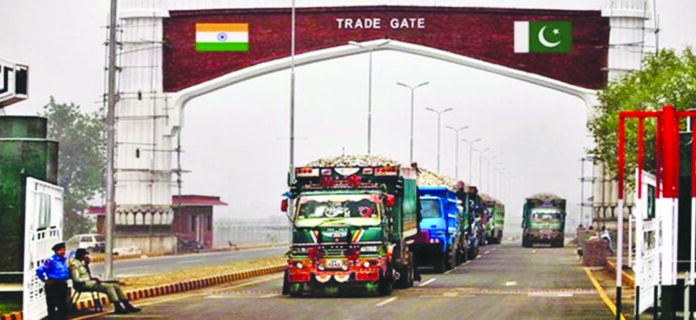Trade between Pakistan and India has remained a casualty of political tensions and wars between the two rival neighbors. The Kashmir issue has been the bone of contention for seven decades, affecting the relationship between the two countries and hindering trade. The Indian government’s decision to remove the special status of Kashmir in August 2019 resulted in the suspension of bilateral trade between the two countries. Since then, trade has remained almost nonexistent. The newly formed government in Pakistan has shown a willingness to resume trade with India which is a good sign for Pakistan’s economy as it could yield positive outcomes for Pakistan by tapping into the missing market.
The unending rivalry between India and Pakistan has hindered regional economic integration. South Asia used to be a single large market a few decades ago with free mobility of goods, services, skilled labour, and capital investments. Despite being composed of countries with common cultural, historical, and administrative backgrounds with a very well-connected infrastructure, it remained the least integrated region around the world. On the other hand, East Asia with countries having little common ground historically with diverse backgrounds has emerged to be the second most integrated region around the globe after the European Union. Political tensions and rivalry among two major countries stand out to be the primary explanatory variable among others responsible for this confusing puzzle.
According to a report of the World Bank, bilateral trade between India and Pakistan is having potential of $37 billion. However, the current volume of bilateral trade between the two countries is $1.35 billion, falling greatly behind its true potential. Currently, trade through third countries, mainly the UAE, is the only channel. Based on empirical evidence of examination of specific sectors, trade between these two countries is a win-win situation. In addition, when the top two deciles of the income distribution are combined, India has a middle class of around 340 million individuals, with growing purchasing power comparable to that of southern Europe, whereas Pakistan’s middle class is estimated to be 84 million. Even a 10 percent share of the Indian middle-class market would double the size of Pakistani corporations and firms. Thus, the true realization of this potential can bring positive outcomes for Pakistan.
Embracing trade with India can boost growth in Pakistan. Pakistan’s exports could increase by 80 percent with a significant impact on GDP and employment. According to another study of the World Bank, India accounts for 80 percent of Pakistan’s total unrealized potential of trade. Exports of Pakistan stood at $12.2 billion in the first five months of FY24. If trade had been ocurring with India this could be $25 billion higher than the current volume of exports, reflecting the positive impacts that this trade can bring.
Moreover, trade with India can also enhance productivity through competitiveness pressure in the domestic market in Pakistan. By tapping into the missing market, Pakistani entrepreneurs can drive innovation and make their entrepreneurial ventures flourish. India is among the top exporters of wheat and Pakistan can benefit from it in mitigating the impact of back-breaking inflation on the poor strata of population.
Although there is a historical rivalry with India, which Pakistan cannot ignore, but it could maintain its trade relations with India as happened in the past when India was the largest market for the exports of Pakistan. For the resumption of trade with India, Pakistan needs to look at India as a potential market for its goods and industries. Both the rivals should separate trade ties from political differences. China’s colossal trade with India is exemplary. Amid border tensions, it has outpaced the USA in terms of trade with India.
In addition, trade with India is also beneficial for Pakistan’s energy sector. Presently, Pakistan is confronted with a serious energy crisis which is having deep impacts on its economy. India is already exporting significant surplus capacity to Bangladesh and Nepal. It has the cheapest solar power around the globe. Pakistan with easy geographical terrain with India can ameliorate the power crunch by cross border trade of power and refined petroleum. Thus, given the current economic landscape of Pakistan, trade with India will bring positive impacts on its economy and can foster a conducive environment for regional cooperation in South Asia.
Although there is a historical rivalry with India, which Pakistan cannot ignore, but it could maintain its trade relations with India as happened in the past when India was the largest market for the exports of Pakistan. For the resumption of trade with India, Pakistan needs to look at India as a potential market for its goods and industries. Both the rivals should separate trade ties from political differences. China’s colossal trade with India is exemplary. Amid border tensions, it has outpaced the USA in terms of trade with India.























